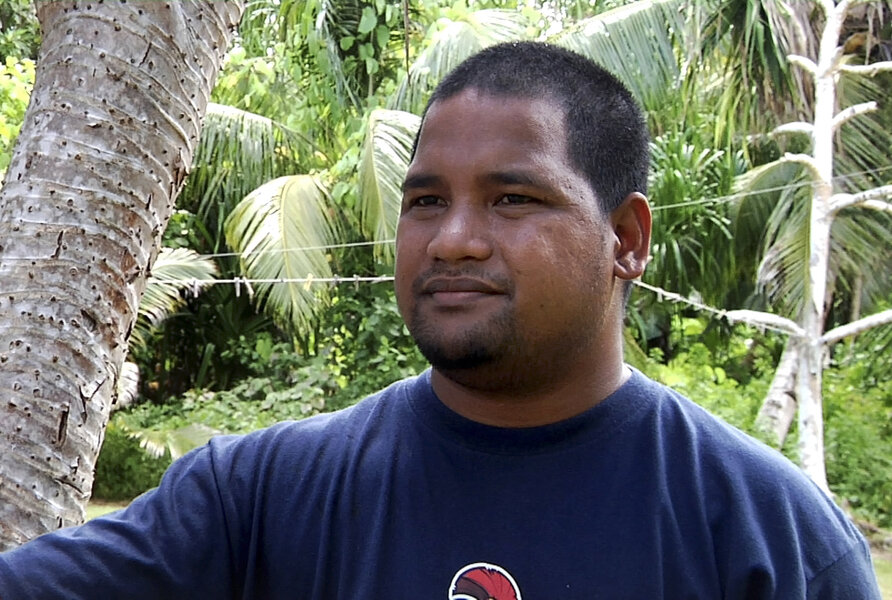In Arkansas, a growing population of 'climate change refugees'
Loading...
Valentino Keimbar, a native of the Marshall Islands, moved 6,000 miles away from his home in the Pacific Ocean last year to Springdale, Arkansas because of climate change.
Located between Hawaii and Australia, the Marshall Islands are made up of 29 atolls and five islands with a population of about 70,000, all of whom live about six feet above sea level.
And another 10,000 Marshallese live in northwest Arkansas. The government of the Marshall Islands even has an official consular office in Springdale.
“Arkansas is the land of opportunity,” Josen Kaious, from the Marshall Islands town of Laura, told the Associated Press.
Because this Pacific island nation is so small, the Marshallese population in Arkansas attribute their Springdale settlement to one man, John Moody, who moved to the US in 1979 after the first wave of flooding. Moody’s family eventually moved to Springdale to live with him and work for Tyson and other poultry companies based in Arkansas, eventually causing a steady flow of extended friends and family migrating to Springdale.
One migrant named Roselinta told CNN that she likes Arkansas because it is far away from the ocean, meaning it is safe.
“Probably in 10 to 20 years from now, we’re all going to move,” Keimbar told the Associated Press.
But the Marshall Islands is not the only country to witness thousands of climate migrants. The Maldives in the Indian Ocean, the Pacific island nation of Kiribati, and the island of Tuvalu south of the Marshall Islands are also at risk.
“If we get climate change wrong there is a very real danger we shall see levels of mass migration as yet unparalleled,” United Kingdom shadow minister of immigration Chris Bryant said in a speech to the Institute for Public Policy Research. “The United Nations (UN) estimates that in 2008 20 million people were displaced by climate change.” And in the long term, “you can imagine that the UN estimates of 200 million such refugees, more than the total number of worldwide migrants today, may be about right,” said Bryant.
Some experts even predict "internal migration" by American climate refugees moving throughout the United States because of extreme weather conditions.
“If you do not like it hot and do not want to be hit by a hurricane, the options of where to go are very limited,” Camilo Mora, a geography professor at the University of Hawaii and lead author of a 2014 paper published in Nature that predicts unprecedented temperatures worldwide by 2047.
“The best place really is Alaska,” Dr. Mora told The New York Times. “Alaska is going to be the next Florida by the end of the century.”
“We think of environmental refugeeism as something that afflicts the developing nations but not us,” climatologist Michael Mann told The Guardian. “But if the drought in California becomes the new normal, and there’s a very real possibility that it does, then we are going to see people driven from their communities, driven from that state.”
Although developed countries such as the US will have their share of climate refugees, Mora and his colleagues agree that other countries like the Marshall Islands will suffer first.
“The fact that the earliest climate departures occur in low-income countries further highlights an obvious disparity between those who benefit economically from the processes leading to climate change and those who will have to pay for most of the environmental and social costs,” they write.
“Its not our fault that the tide is getting higher,” Carlon Zedkaia, a Marshall Island native told the Associated Press. “Just somebody else in this world that wants to get rich.”






